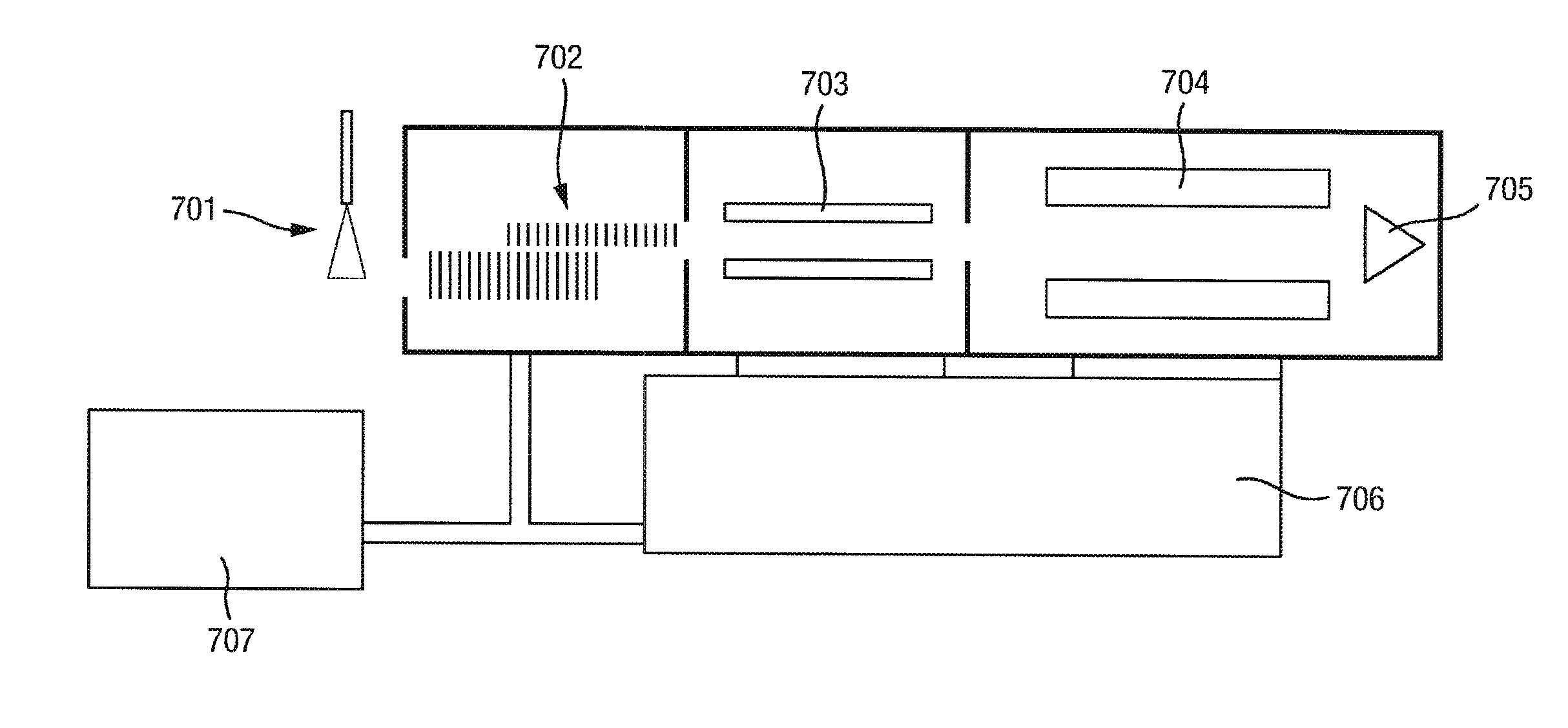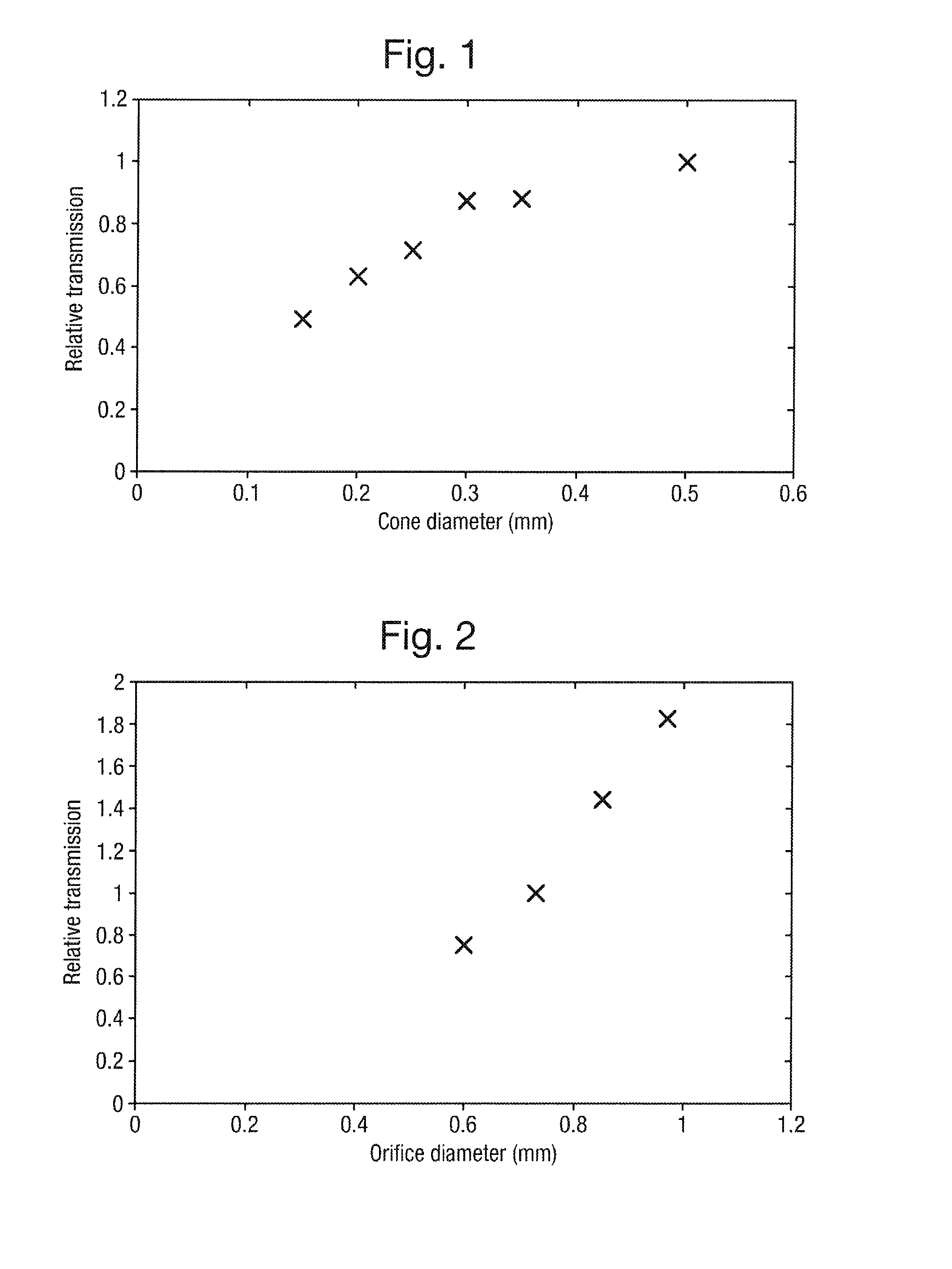Compact Mass Spectrometer
a mass spectrometer and compact technology, applied in the direction of isotope separation, particle separator tubes, electrical equipment, etc., can solve the problems of limiting the sensitivity of instruments, impractically large vacuum pumps, and difficult replacement of conventional orifices with smaller orifices
- Summary
- Abstract
- Description
- Claims
- Application Information
AI Technical Summary
Benefits of technology
Problems solved by technology
Method used
Image
Examples
Embodiment Construction
[0193]A preferred embodiment of the present invention will now be described. The preferred embodiment relates to a compact or miniature mass spectrometer which preferably maintains a level of sensitivity similar to current commercial full size mass spectrometers but which is substantially smaller (3 c.f. >0.15 m3 for a conventional full size instrument), lighter (70 kg) and less expensive.
[0194]The preferred miniature mass spectrometer utilises a small backing vacuum pump and a small turbomolecular vacuum pump with considerably lower pumping speeds (300 L / s for a full size turbomolecular vacuum pump and 3 / h c.f. >30 m3 / h for the backing vacuum pump) than a conventional full size mass spectrometer and which consequently consumes considerably less electricity and generates considerably less heat and noise than a conventional full size mass spectrometer.
[0195]The preferred mass spectrometer is preferably used for real time on-line analysis of samples separated using high pressure or ul...
PUM
 Login to View More
Login to View More Abstract
Description
Claims
Application Information
 Login to View More
Login to View More - R&D
- Intellectual Property
- Life Sciences
- Materials
- Tech Scout
- Unparalleled Data Quality
- Higher Quality Content
- 60% Fewer Hallucinations
Browse by: Latest US Patents, China's latest patents, Technical Efficacy Thesaurus, Application Domain, Technology Topic, Popular Technical Reports.
© 2025 PatSnap. All rights reserved.Legal|Privacy policy|Modern Slavery Act Transparency Statement|Sitemap|About US| Contact US: help@patsnap.com



